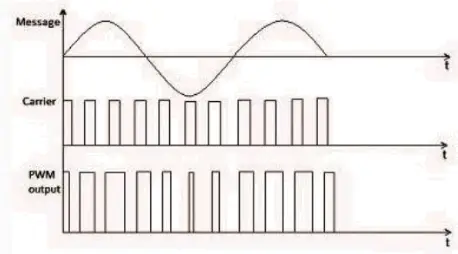In this article, we will learn about Pulse Time Modulation. In the previous article, we had learned about pulse amplitude modulation.
In Pulse Time Modulation, the timing characteristics such as width, position, and frequency are varied with the amplitude of the input signal.
So, Pulse Time Modulation are of three types i.e.
- Pulse Width Modulation (PWM)
- Pulse Position Modulation (PPM)
- Pulse Frequency Modulation (PFM)
1. Pulse Width Modulation (PWM)
In this type of modulation, the width of the pulses is varied according to the amplitude of the input signal.
Pulses have fixed starting time and fixed amplitude but width of each pulse is made proportional to the amplitude of the signal at that instant.
For example: for amplitude 0.8, 0.3, 0 & −0.5, pulse width is taken as 1.8, 1.3, 1 & 0.5 μsec. The pulse width corresponding to 0 is selected as 1 μsec assuming that signal amplitude varies between 1V and − 1V.
Pulse width corresponding to zero is selected as 1 microsecond assuming that signal amplitude varies between 1V and −1 V.

